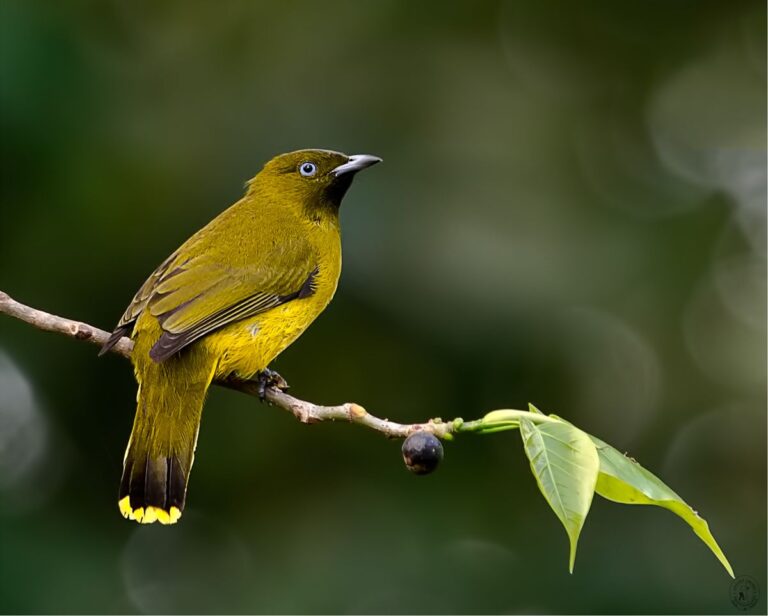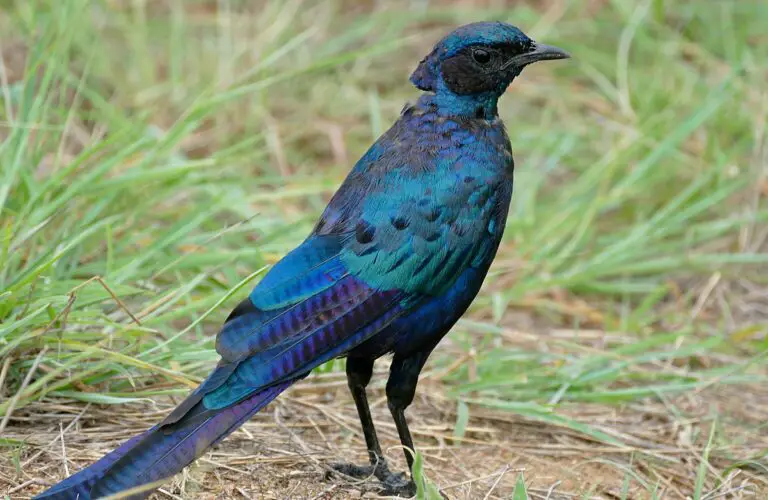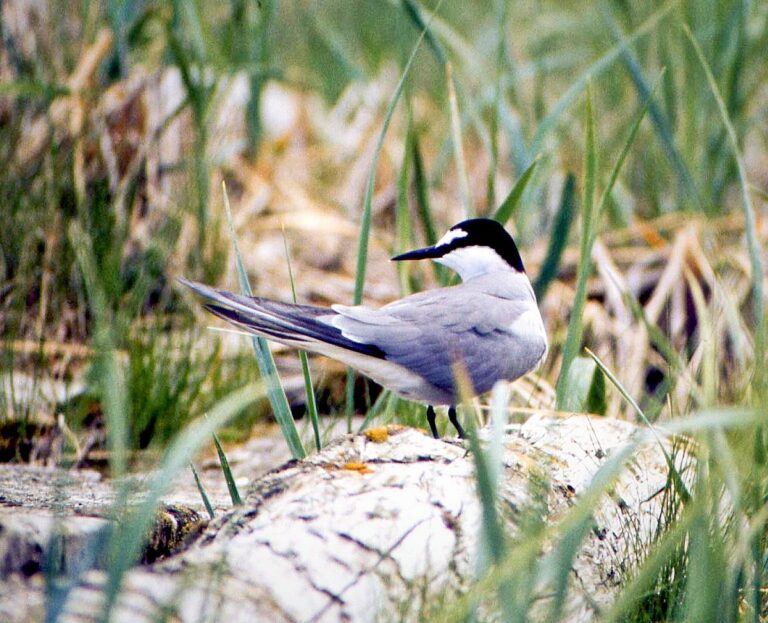Dunnock (Prunella modularis)
Scientifically Classification
- Kingdom: Animalia (Animals)
- Phylum: Chordata (Chordates)
- Class: Aves (Birds)
- Order: Passeriformes (Perching Birds)
- Family: Prunellidae
- Genus: Prunella
Conservation Status: Least Concern
Locations: Dunnocks are found in various regions across Asia, Europe, and Oceania.
Here are some interesting facts about the Dunnock:
- Prey: Dunnocks primarily feed on insects, spiders, worms, and seeds.
- Fun Fact: Both male and female Dunnocks can have multiple mates during each breeding season.
- Estimated Population Size: There are an estimated 25-44 million mature individuals of Dunnocks.
- Biggest Threat: The biggest threat to Dunnocks is habitat loss.
- Most Distinctive Feature: The dark streaks on their back are among their most distinctive features.
- Other Name(s): Dunnocks are also known as hedge accentor, hedge sparrow, or hedge warbler.
- Wingspan: Their wingspan ranges from 19 to 21 centimeters (7.5-8.2 inches).
- Incubation Period: Dunnocks have an incubation period of 12-13 days.
- Habitat: They inhabit shrubs, woodlands, hedgerows, and gardens.
- Predators: Dunnocks are preyed upon by cats and sparrowhawks.
- Diet: They are omnivores.
- Type: Dunnocks are birds.
- Common Name: Dunnock is their common name.
- Number Of Species: There is only one species of Dunnock.
- Location: They are found in Europe and Western Asia.
- Nesting Location: Dunnocks build their nests in shrubs or trees.
- Age of Molting: Molting typically occurs at 11-12 days old.
- Migratory: Dunnocks are migratory birds.
- Physical Characteristics:
- Color: They have a combination of brown, grey, and black plumage.
- Lifespan: Dunnocks can live up to 11 years.
- Weight: They weigh between 19-24 grams (0.6-0.9 ounces).
- Height: Dunnocks stand at around 14 centimeters (5.5 inches) tall.
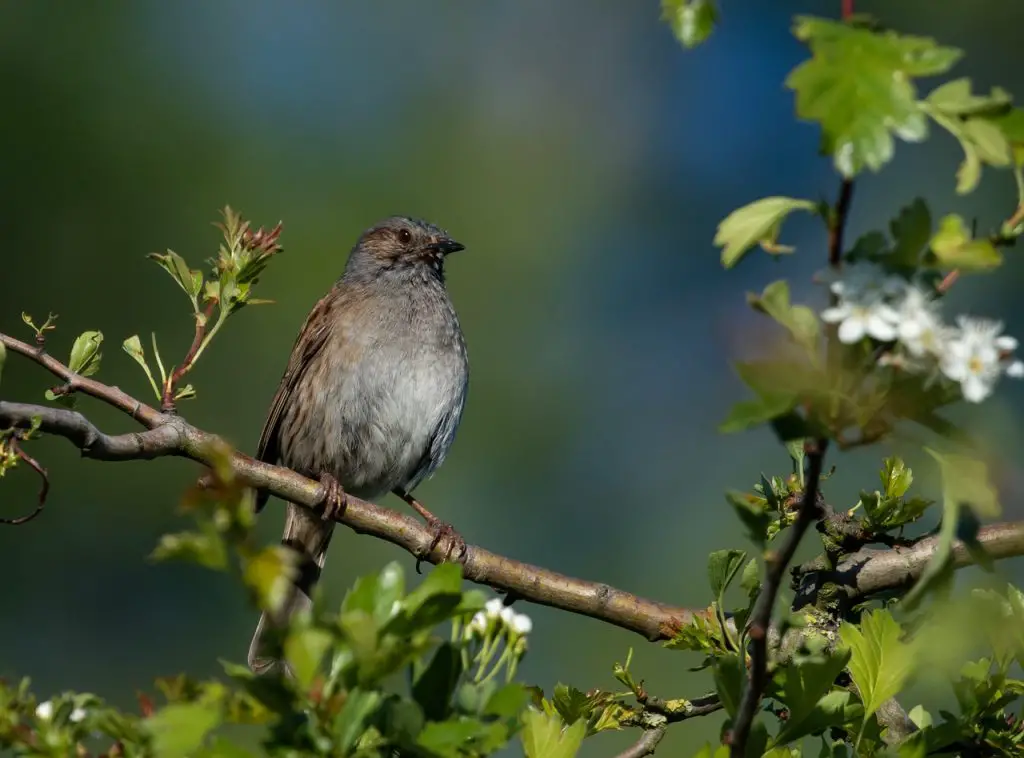
Here is something amazing about Dunnock:
The dunnock, a charming little songbird native to Europe, goes by several monikers, including hedge sparrow and hedge accentor. Despite its name, it’s not actually a sparrow but belongs to the accentor family. Distinguishing between the two can sometimes be challenging due to their similar appearances. What sets the dunnock apart is its unique mating behavior. Unlike many other birds, both males and females can have multiple mates during breeding season, making their mating system quite variable, ranging from monogamous to polygamous setups depending on circumstances.
Interestingly, the female dunnock maintains her own territory, a trait uncommon among birds. This territorial behavior adds another layer of complexity to their social dynamics. If you’re keen to attract these delightful birds to your backyard, providing simple shelters and clean water is key, as they don’t rely heavily on nest boxes. Creating a welcoming environment can encourage dunnocks to visit and perhaps even set up their nests nearby.
3 Fascinating Facts About Dunnock
- Origin of Name: The English name “dunnock” originates from the word “dun,” which means brown, combined with the diminutive “ock,” indicating smallness. This name aptly describes the bird’s brownish plumage and diminutive size.
- Sperm Removal: In a remarkable display of reproductive strategy, male dunnocks have the ability to remove the sperm of a female’s previous partners. This action increases the chances of the male’s own sperm fertilizing the eggs, enhancing his reproductive success.
- Alloparental Care: Male dunnocks exhibit an interesting behavior of investing time and effort in raising juveniles that are not biologically their own. This altruistic behavior is observed when a male has previously mated with the mother of the juveniles, demonstrating a unique aspect of their social structure and parental care.
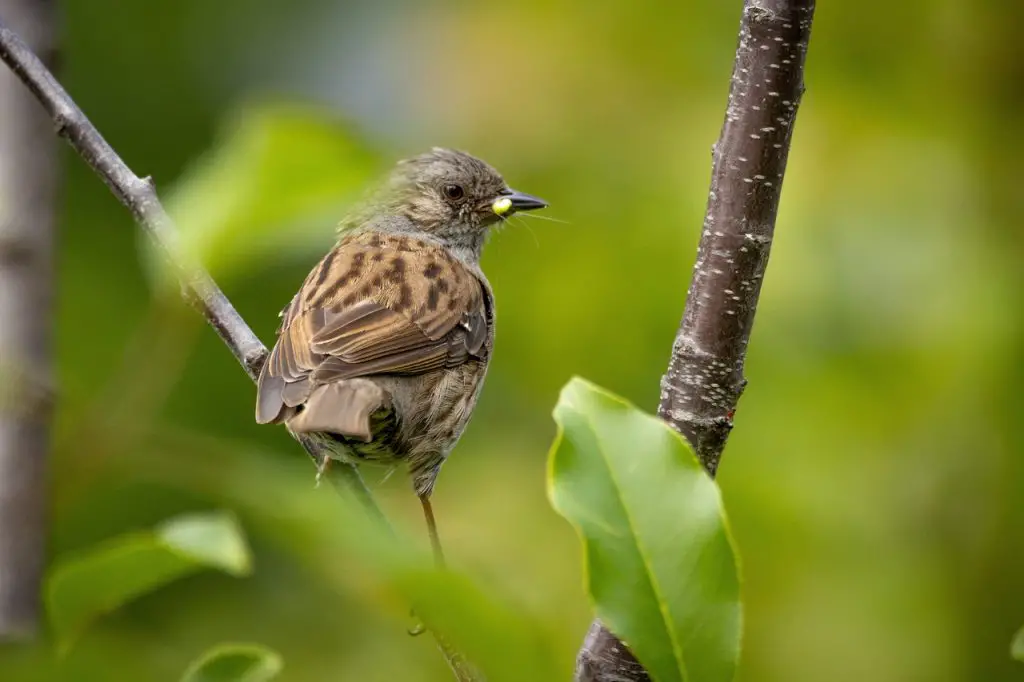
Where to Find the Dunnock
Dunnocks, known for their adaptability, can be spotted in a variety of habitats across Europe and western Asia. Look for them amidst shrubs, hedgerows, and mixed forests, where they often make their homes. They’ve even been known to venture to coastal cliffs and dunes on occasion.
Interestingly, these resilient birds have also made their mark in far-off lands. Introduced to New Zealand in the 19th century, they’ve not only survived but thrived in their new environment. Unlike many of their accentor relatives, dunnocks aren’t restricted to mountainous habitats, showcasing their versatility and ability to thrive in diverse settings.
Dunnock Nests
Dunnocks take great care in building their nests, which are typically crafted from twigs and moss. To provide warmth and comfort for their eggs and chicks, they line the nest with soft materials like wool, feathers, and other cozy substances. You’ll often find these intricately constructed nests nestled within bushes or perched in the branches of conifer trees, providing a secure and sheltered environment for the dunnock’s growing family.
Dunnock Scientific Name
The scientific name of the dunnock, Prunella modularis, carries interesting linguistic roots. “Prunella” is derived from the diminutive form of the Latin words “brunus” or “prunus,” which mean brown, reflecting the bird’s characteristic brownish plumage. “Modularis,” on the other hand, is a Latin term meaning modulating or singing, perhaps alluding to the dunnock’s melodious vocalizations.
In terms of evolutionary lineage, the dunnock’s closest living relatives include species such as the brown accentor, Japanese accentor, and robin accentor, among others, which are all part of the same genus. Currently, there are eight recognized subspecies of the dunnock, each exhibiting slight variations in appearance and behavior. While some taxonomists have suggested that certain subspecies might warrant classification as separate species, they are presently considered subspecies of the dunnock.
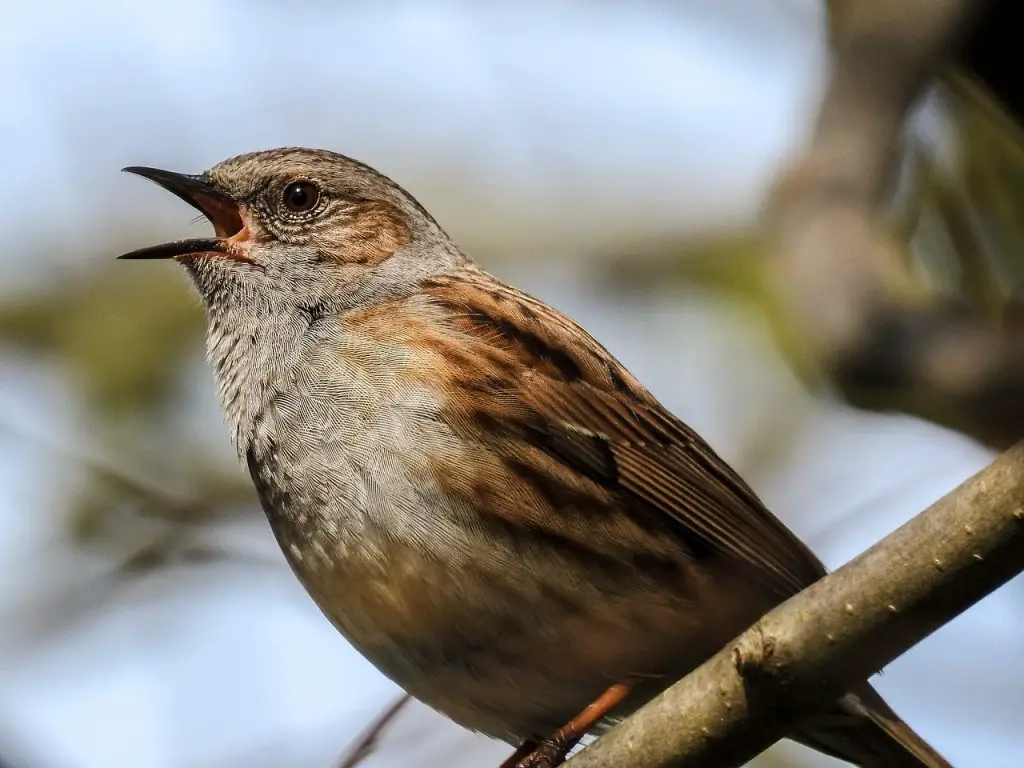
Dunnock Size, Appearance, and Behavior
The dunnock, roughly the size of a robin, boasts a plump, rounded body and a slender, pointed beak. Typically measuring between 5 to 6 inches from head to tail, with a wingspan spanning around 8 inches, it’s a compact bird with a notable presence. Its breast and face sport a soft bluish-gray plumage, while its wings and tail feature a brown hue adorned with distinct dark black streaks. Males and females share a similar appearance, presenting a challenge for identification, although juveniles typically display less gray than their adult counterparts.
Despite its unassuming appearance, the dunnock possesses a reserved nature, often quietly foraging for food in the vicinity of bushes, gardens, and hedgerows, its distinctive shuffling gait marking its presence. When two male dunnocks clash, however, the scene transforms into a flurry of wing flicking and raucous calls, revealing a more spirited side to this otherwise demure bird. During the breeding season, males produce a unique bird song, characterized by a harsh, squeaking warble.
One of the dunnock’s notable quirks lies in its territorial behavior. Both males and females carve out and fiercely defend their own separate territories, a behavior uncommon among birds and adding an intriguing dimension to their social dynamics.
Dunnock Migration and Timing
The dunnock is primarily a sedentary species, typically staying in the same area throughout the year. However, in regions where winters are particularly harsh, individuals may undertake short-distance movements to seek refuge from the cold weather. These movements serve as a means of escaping the most severe winter conditions, allowing dunnocks to maintain their survival in challenging climates. Overall, while they may exhibit some flexibility in response to environmental conditions, dunnocks generally prefer to stay put in their familiar habitats year-round.
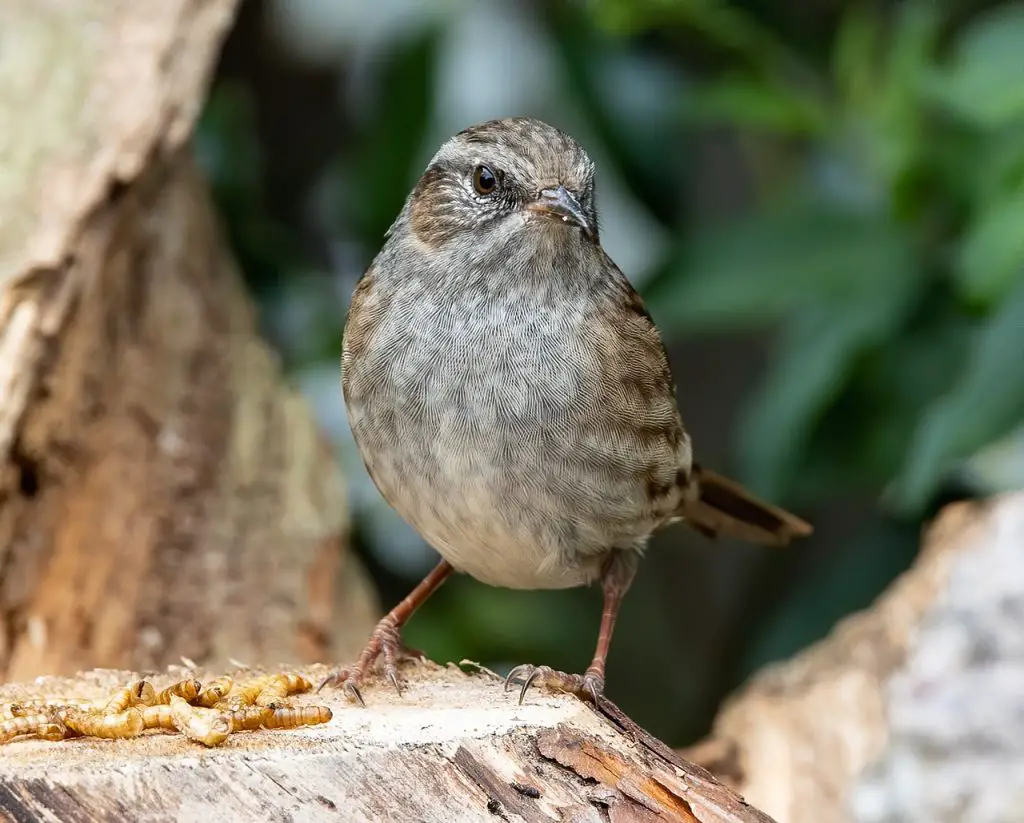
Dunnock Diet
Indeed, the dunnock is an omnivorous bird, displaying a versatile diet that includes both plant and animal matter. With its agile movements, it’s a common sight to observe dunnocks darting around bushes, diligently pecking at the ground in pursuit of sustenance. Their foraging behavior involves probing the leaf litter and soil for a variety of food items, including insects, spiders, worms, seeds, and small fruits. This opportunistic feeding strategy allows dunnocks to adapt to the seasonal availability of food resources, ensuring their nutritional needs are met year-round.
What does the dunnock eat?
The dunnock primarily sustains itself on a diet of insects, worms, and spiders, showcasing its adeptness as an insectivore. However, during the winter months when insect availability dwindles, dunnocks will diversify their diet by incorporating small seeds. This supplementary feeding strategy helps them bridge the gap between seasons and ensures they maintain their energy levels even when their preferred prey is scarce. By adapting their diet to the changing seasons, dunnocks demonstrate their resourcefulness and ability to thrive in diverse environments.
Dunnock Predators, Threats, and Conservation Status
Despite being classified as a species of least concern by the IUCN Red List, the dunnock still encounters several challenges in its natural habitat. While populations generally seem robust and widespread, certain factors threaten their well-being. The loss of brush and hedgerows, often due to habitat destruction and human development, poses a significant obstacle for some dunnock populations, impacting their ability to find suitable nesting and foraging sites.
Another notable threat comes from cuckoos, notorious brood parasites, which exploit the dunnock’s parental care instincts to raise their own offspring. Cuckoos lay their eggs in dunnock nests, tricking the unsuspecting parents into caring for cuckoo chicks at the expense of their own offspring. This parasitic behavior can lead to a decline in dunnock populations if left unchecked, highlighting the complex interplay between species in the wild. Despite these challenges, ongoing conservation efforts aim to mitigate the impact of these threats and ensure the continued survival of the dunnock in its natural habitat.
What eats the dunnock?
The dunnock faces predation from various sources in its environment, including cats, sparrowhawks, and other birds of prey. These predators pose a constant threat to dunnocks, especially when they are vulnerable during activities such as foraging or nesting. However, dunnocks have developed strategies to defend themselves against these predators.
One such strategy is mobbing, where dunnocks, along with other small birds, collectively harass and intimidate predators to drive them away. This coordinated defense mechanism involves multiple individuals attacking the predator with swoops, calls, and even physical contact, effectively distracting and disorienting the predator. While mobbing may not always result in the predator fleeing, it can disrupt their hunting attempts and make them think twice before targeting dunnocks again.
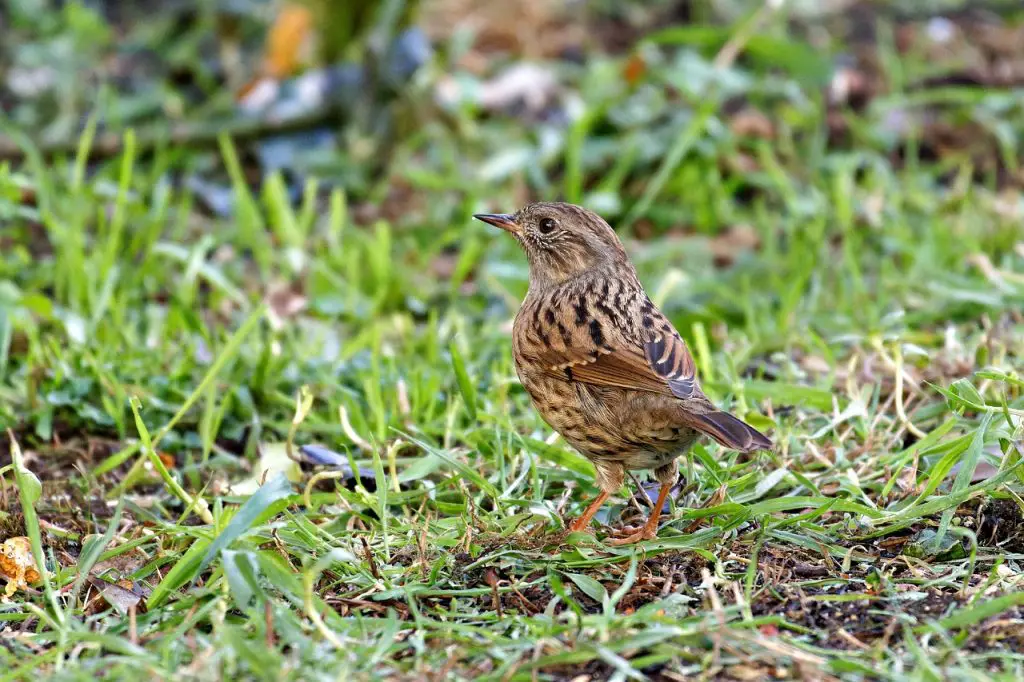
Despite the ongoing risk of predation, the dunnock’s ability to mobilize and cooperate in the face of danger showcases its resilience and adaptability in the natural world.
Dunnock Reproduction, Young, and Molting
Dunnocks exhibit highly adaptable reproductive strategies that vary based on factors such as food availability and the ratio of males to females in their population. In times of plenty, females may reduce the size of their territories, facilitating easier access for males to multiple mates. This can result in scenarios where a single male or a coalition of two males monopolizes mating rights with several females. Conversely, when food is scarce, females expand their territories, potentially leading to a single female monopolizing access to multiple males for reproduction.
Breeding season for dunnocks typically unfolds in spring, marked by communal displays where birds hop, flick their wings, and engage in staccato songs. Once pairs have formed, mating can occur frequently, with copulation happening once or twice every hour throughout the ten-day mating period. Females lay clutches of three to six eggs, which are typically blue in color.
Following an incubation period of nearly two weeks, hatchlings emerge naked and dependent on parental care. Both males and females, sometimes forming cooperative groups, take turns feeding and tending to the vulnerable young. Impressively, juveniles fledge a mere 11 or 12 days after hatching. Mature dunnocks can breed multiple times in a single mating season, often producing up to three broods.
However, despite their reproductive efforts, dunnocks face significant challenges in terms of predation and disease. With an average lifespan of just two years, these birds must make the most of their breeding opportunities before succumbing to natural threats. The longest-lived recorded dunnock reached an impressive age of about 11 years and three months, highlighting the variability in individual lifespans within this species.

Dunnock Population
The dunnock boasts an estimated population ranging from 25 million to 44 million individuals, showcasing its widespread presence. However, determining a precise population count proves challenging due to considerable uncertainty in data collection methods. Despite this, indications suggest that population numbers are experiencing declines in certain regions, raising concerns about the species’ long-term sustainability.
Factors contributing to these declines may include habitat loss, predation, and environmental changes, highlighting the need for continued monitoring and conservation efforts to safeguard dunnock populations. By addressing these threats and implementing effective conservation measures, we can work towards stabilizing and potentially reversing population declines, ensuring the continued existence of this charming bird species for generations to come.
Lastly…
The dunnock, with its adaptable behaviors, versatile reproductive strategies, and widespread presence across Europe and western Asia, presents a fascinating subject of study in avian biology. Despite facing challenges such as habitat loss, predation, and uncertain population trends, ongoing conservation efforts are crucial for safeguarding its future. By understanding and addressing these threats, we can work towards ensuring the survival of this resilient and charismatic bird species for generations to come.
Reference:
